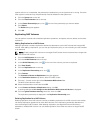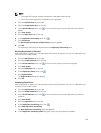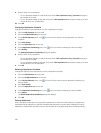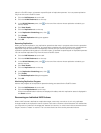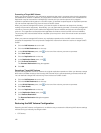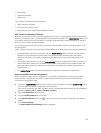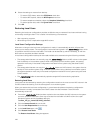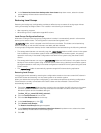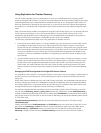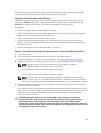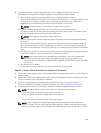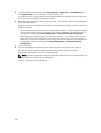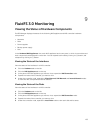Using Replication for Disaster Recovery
You can create a disaster recovery configuration in which you replicate data from a primary FluidFS
cluster to a target FluidFS cluster. You can fail over to the target cluster if the primary FluidFS cluster stops
responding because of an unexpected failure (hardware, disk, and so on). The target FluidFS cluster can
either be used solely for backup for the primary site, or it can have its own NAS volumes sharing data at
the target site. In a bi‐directional configuration, both FluidFS clusters can act as a failover target for each
other.
After you have fixed the problem that caused the original FluidFS cluster to fail, you can manually fail back
to the original configuration in which clients access data on the source NAS volume, which in turn
replicates to the target NAS volume. Depending on time and bandwidth considerations, failing back to
the source NAS volume might take a considerable amount of time to complete.
The following considerations apply when using replication for disaster recovery:
• If the original source NAS volume is no longer available, you can configure the recovery NAS volume
to replicate to another NAS volume in the original source FluidFS cluster. However, if the original
source NAS volume is available, Dell recommends failing back to it. Failing back to the original source
NAS volume usually takes less time than failing back to a new NAS volume. If the FluidFS clusters have
a common snapshot, they only need to synchronize the data that changed after that snapshot was
created. If no common snapshot is available, or if replicating to a new NAS volume, all data must be
synchronized.
• A single FluidFS cluster cannot contain two sets of CIFS home shares. Consider the example in which
Cluster A and Cluster B both have CIFS home shares, for different sites or user bases. Cluster A and
Cluster B both serve as replication destinations for each other’s NAS volume that contains the CIFS
home shares. If the administrator tries to fail over Cluster A’s NAS volume that contains CIFS home
shares to Cluster B, Cluster B rejects this operation because it already has CIFS home shares defined
on it.
Managing the DNS Configuration for Single NAS Volume Failover
For single NAS volume failover, it is important that the environment is set up to properly migrate clients of
the NAS volumes you are failing over, without disrupting the clients of other NAS volumes you are not
failing over.
When a NAS Volume is failed over from one FluidFS cluster to another, the IP addresses that are used to
access it change from Cluster A’s IP addresses to Cluster B’s IP addresses. Dell recommends facilitating
this change using DNS. It is recommended to set up a DNS entry to correlate to each NAS volume, and
change the DNS entry for single NAS volumes when they are failed over.
For example, suppose Marketing and Sales have their own NAS volumes, with a CIFS share on the NAS
volume named marketing_share and sales_share respectively. A DNS entry named FluidFSmarketing, is
created for Marketing and another DNS entry for Sales named FluidFSsales is created. Both NAS volumes
point to the same set of client VIPs on source Cluster A. Marketing can access the Marketing NAS volume
or CIFS share using
\\FluidFSmarketing\marketing, and Sales can access the Sales NAS volume or CIFS share using \
\FluidFSsales\sales.
Initially, both DNS entries FluidFSmarketing and FluidFSsales point to the same set of client VIPs. At this
point, both the marketing and sales CIFS shares can be accessed from either one of the DNS names,
FluidFSmarketing or FluidFSsales. When you want to fail over a single NAS volume (for example
Marketing) change the DNS entries for FluidFSmarketing to resolve to the client VIPs on Cluster B.
146



